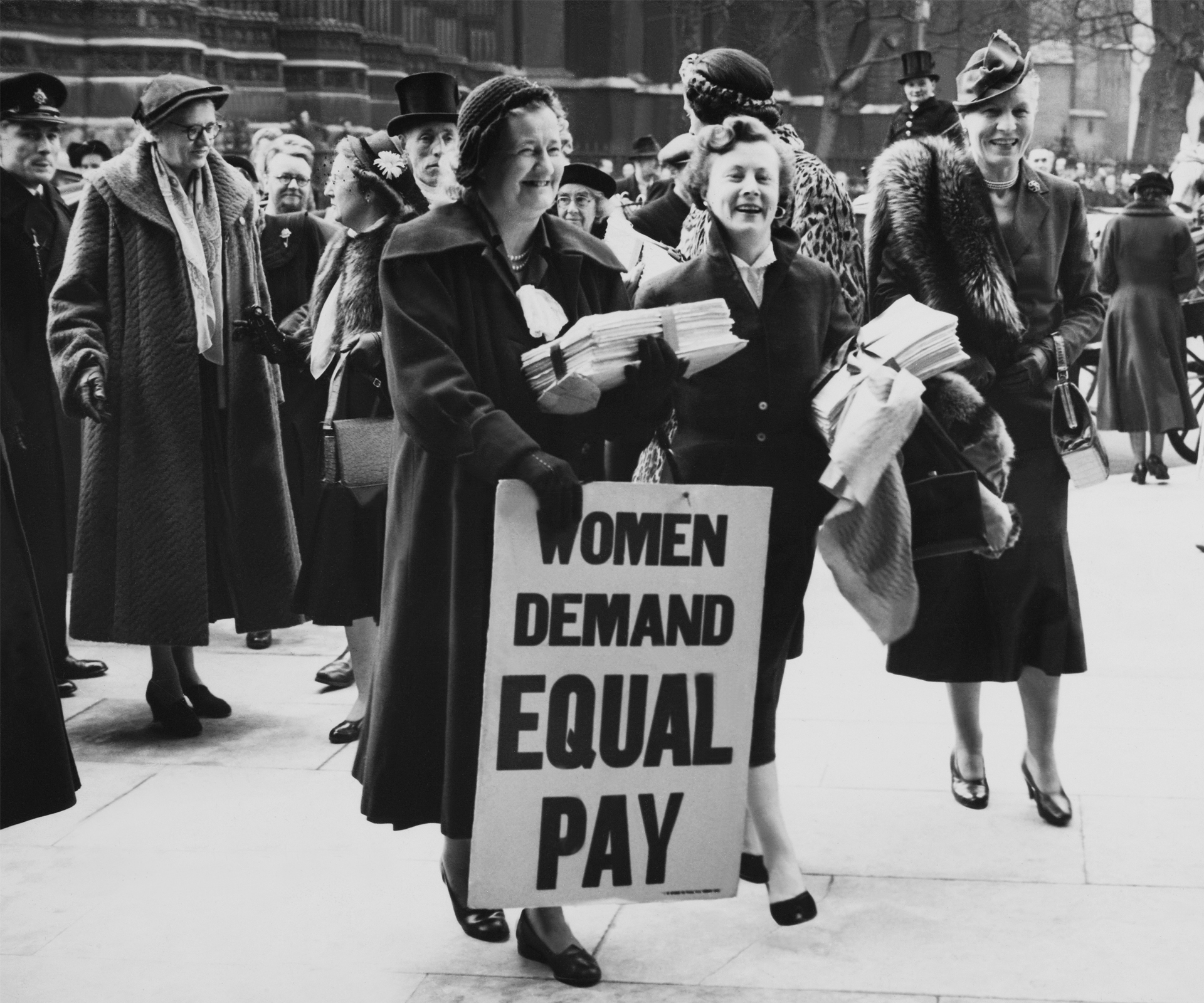Picture in your mind a medium-sized Australian company with, say, 250 employees.
Now imagine that 70 per cent of the employees are women.
Now place all the employees on a ladder, with all the men in suits right at the top. Give them corner offices, car spaces and business-class trips abroad.
Now put all the women down the bottom, mopping the floors.
That is the situation for Australian women today.
Don’t scoff. It’s actually true. Go to any school, and take a look at the principal. Odds on, he’s a man. The teachers? They’ll be women.
Go to any government department, take a look at the head. Probably a man. The team? Largely women.
Go to any boardroom, take a look around the oval-shaped table. Men, men, men. Now watch as the door opens and a woman comes in, carrying a drinks tray.
In fact – and this is frankly hilarious – there are more men called Michael in top jobs in Australia than there are women.
Now say: ah yes, but that’s not true for all companies. Some companies have quite a few top women.
The key to that sentence is ‘a few.’
Ah yes, but let’s not forget that not all women want to strive for the top jobs. For some women, earning crap money is a choice. They don’t want to work as hard as men. They have different priorities. I mean, who wants to travel to exotic locations to bond with colleagues over drinks in fine hotels? Who wants to be involved in the trickiest, most rewarding decisions?
Not women. They prefer to amble along, because they’ll soon be having babies anyway, after which, women – and especially non-English speaking, migrant women – like staying home.
They don’t want to get ahead. They don’t want financial freedom. They’re happy to be part of a family unit, where HE earns the money, and she does the dishes (unless they have a cleaner, who will also be a woman.)
It’s laughable, and yet that’s the world in which Australian women live.

All the figures clearly show that, overall, women earn significantly less than men.
Worse, the more female employees an organization has, the more likely they are to be bossed about by men in cushy jobs.
The best example of that is the health care sector, where hospital cleaners and nurses and support staff on the never-ending nightshift earn 30 per cent less than the men in the building.
Nationwide, gender pay gap is 18.8 per cent, and growing: between November 2013 and May 2014, men’s salaries increased an average $24.90 per week and women’s increased only $7.09.
How do they – men – get away with it?
Part of the problem is secrecy.
No company makes plain exactly how it duds women. The fact that the numbers are stacked toward men is almost never made public, perhaps because there would be a riot in the lift, as capable women realised that the men standing around them – most of whom are no better qualified, and no more intelligent – are earning, on average, 20 per cent more.
With this in mind, British Prime Minister David Cameron yesterday announced new rules to force UK businesses with more than 250 employees to disclose the pay gap between their male and female employees.
With some luck, this will mean that British women will be able to look at data sheets provided by their company, and see for themselves how many women are stuck in the lower paid jobs.
Cameron is hoping to shame those companies that routinely overlook women into paying them a little better.
Props to him, but will it work?
After all, it’s not like women don’t know how badly they’re being dudded. Walk around the streets of any city, and you’ll see men in suits earning more than you do.
Men who did less well at school, who weren’t as smart, or as quick, or as capable.
Up the ladder they go, over and on top of you.
Also, it’s not like every woman in the building doesn’t know that she’s getting less than the blokes around her.
Not just in terms of money. Less in terms of status, and job title. Less in terms of company car, and car space. Less in terms of receiving an actual salary increase when she’s promoted into a new job.
Cameron says he wants to end pay disparity in one generation.
An industry group known as CBI is wailing, saying the release of such data should be voluntary because it might be “misleading.”
Misleading? Yes, because the figures won’t take into account the fact that many women leave the workforce upon the arrival of their children, and again when their parents get old.
In other words, we shouldn’t worry about how badly off women are at work, because women also get to do all of society’s unpaid work – caring for babies, caring for the disabled and the elderly – and it’s only fair that we stiff them for it in the workplace.
Fine old world we live in.

